There was no question KZ would ‘be back’, but is the ZSX a worthy sequel for the franchise?
- Solid sound and respectable build quality.
- Clean, deep bass.
- A great balance across the frequency range with good extension high and low.
- Terrific bang-for-the-buck.
- The standard KZ accessories fail to invoke excitement.
- The unique shape may not comfortably fit all ears.
- Midrange falls slightly behind the bass and treble quality.
Pop quiz. How many KZ IEMs are there? Name them all.
“30? 40? Uhh…”
Trick question. You forgot to include the related sister brand IEMs.
“So, like 45?”
Something like that. Your guess is as good as mine these days.
It’s completely overwhelming.

There is only one way that KZ can overcome the consumer, market and reviewer confusion and inevitable fatigue: they must continue to get better. Better sound. Better price. Better build.
If KZ products do not constantly improve, the industry is going to stop paying attention. However, if they can continue to listen to customer feedback, and if they can tweak, and adjust, and live that industry buzzword of ‘continuous improvement’, KZ does have the potential to further cement their dominance in the ‘bang-for-the-buck’ Chi-Fi IEM category.
So, have they done it with the $50, 6-driver per side, hybrid ZSX?
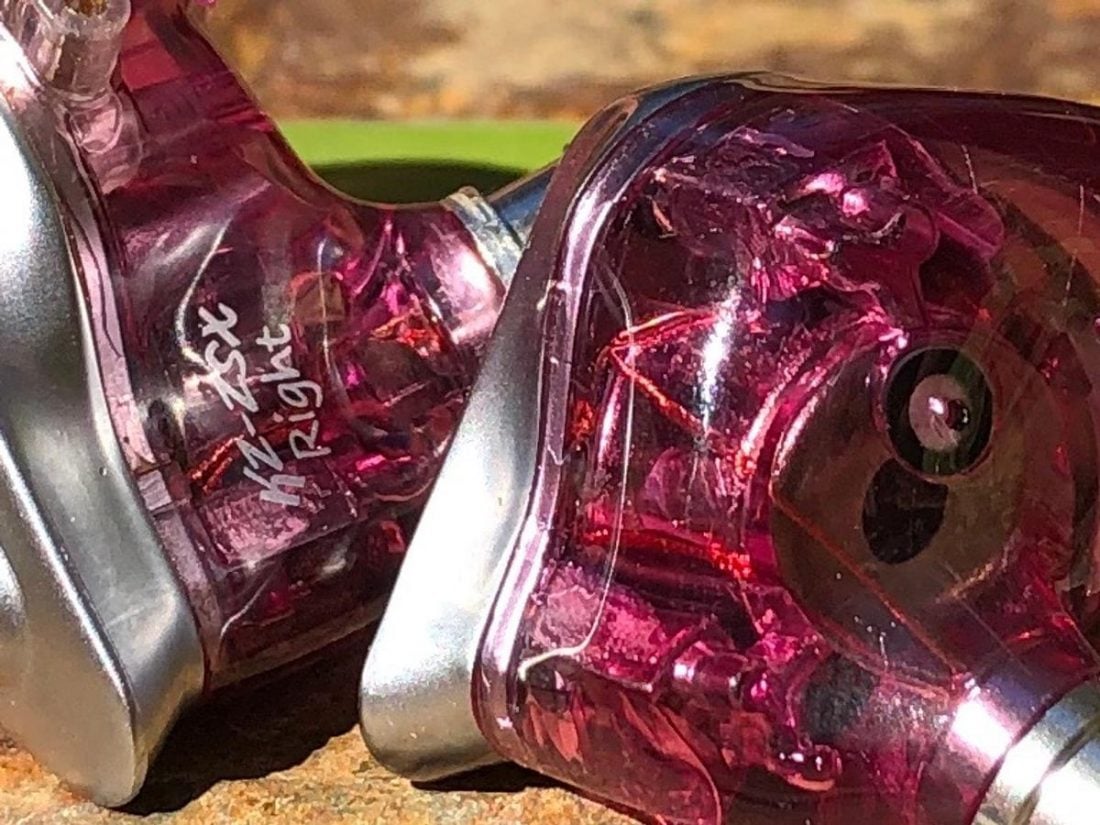
KZ Overview
KZ was founded in 2008 by classical musician Zen Li and former Audio-Technica engineer Keith Yue. It is a public brand for the Shenzhen Yuanze Electronics Company located in Guangdong, China.
KZ has generated a huge amount of industry buzz by creating products that have seriously redefined the ratio of price to performance. There is seemingly unending hype over KZ (as of writing: approximately 3000 pages in a single Head-Fi post). The caveat? Most discussions conclude with the idea that although their IEMs may not produce the absolute best sound, they are difficult to beat at the low price point.
Recently, some of their newer models, more technologically advanced and correspondingly higher-priced, have elevated the brand as a mainstream competitor. However, KZ has received criticism for copying the design and form factor of high-end models from Campfire Audio and Audio-Technica.
KZ IEM Series
KZ is also known for releasing many different models, so it gets convoluted when trying to figure out their hierarchy of IEMs. In a nutshell, the KZ offerings include the following series:
- AS – AS6, AS10, AS12, AS16 (balanced armature drivers – # denotes total drivers)
- AT – ATE, ATES, ATR (single dynamic driver)
- BA – BA10 (balanced armature drivers – # denotes total drivers)
- BT – BTE (hybrid BA and dynamic drivers – Bluetooth)
- ED – EDR2, ED4, ED7, ED9, ED12, ED15, ED16 (typically a single dynamic driver – ED15 and ED16 are hybrid)
- ES – ES3, ES4 (hybrid – 1 BA + 1 dynamic driver)
- HD – HDS3, HD9 (single dynamic driver)
- ZS – ZSA, ZSE, ZSN, ZSN Pro, ZSR, ZST, ZST Pro, ZST Colorful, ZSX, ZS1, ZS2, ZS3, ZS4, ZS5 (v1 and v2), ZS6, ZS7, ZS10, ZS10 Pro (ZS1-3 and ZSE are dual dynamic driver, other ZS are hybrid)
CCA and Tripowin
To further complicate things, KZ has recently started releasing IEMs under other brand names as well. Clear Concept Audio (CCA) and Tripowin are sister brands and have released very similar IEMs (sharing components, technology, design, ear tips, etc. with KZ models).
While alike, the sister IEMs are slightly altered products than the KZ versions. Differences can include driver selection, cables, shape, internal structure, etc. and it varies by model. However, they are targeted at the very same budget IEM market.
CCA IEMs
- C04: Hybrid – 1 BA + 1 DD. Similar to the KZ ZSN Pro housing design. Again # denotes total number of drivers per both IEMs.
- C10: Hybrid – 4 BA + 1 DD. Similar to the KZ ZSN housing design and the ZS10 driver lineup (but with a different dynamic driver).
- C12: Hybrid – 5 BA + 1 DD. Similar to the AS16 housing design and the ZSX driver lineup. Uses a single 300095 treble BA per side.
- C16: 8 BA. Similar to the AS10 housing design. 2x 22955 bass BA, 2x 29689 midrange BA and 4x 30095 treble BA per side. Differs from AS16 which uses 4x 31736 treble BA.
Tripowin IEMs
- TP10: 5 BA. Similar to the AS16 housing design but with a flat front. 1x 22955 bass BA, 2x 29689 midrange BA and 2x 30095 treble BA per side.
The Challenge of In-Ear Monitor Reviews
I’d like to add a caveat. IEMs are notoriously difficult to review and compared to full-size headphones, it is problematic to trust that review findings will be applicable to all readers.
While the size of one’s ear may impact the comfort or the sound of a full-size headphone, small details like the inner shape of a reviewer’s ear and the fit of an IEM greatly impacts not just the listener’s comfort but dramatically changes the perceived performance of an IEM.
This is compounded by the plethora of ear tip sizes, materials, and shapes (which may or may not be included with the IEM) all of which uniquely fit different people. Most significantly, the quality of the ear tip seal within the ear changes the sound. So, beware dear reader, what suits one reviewer may not be applicable to you.
Technical Specifications
- Drivers: 5BA+1DD
- Impedance: 24 Ohm
- Sensitivity: 111 dB
- Frequency Response: 7Hz – 40 kHz
- Cord Length: 125 cm
- Plug Type: 3.5 mm Plug
- Mic: Optional
- Colors: Black, Purple, Cyan

Packaging and Accessories
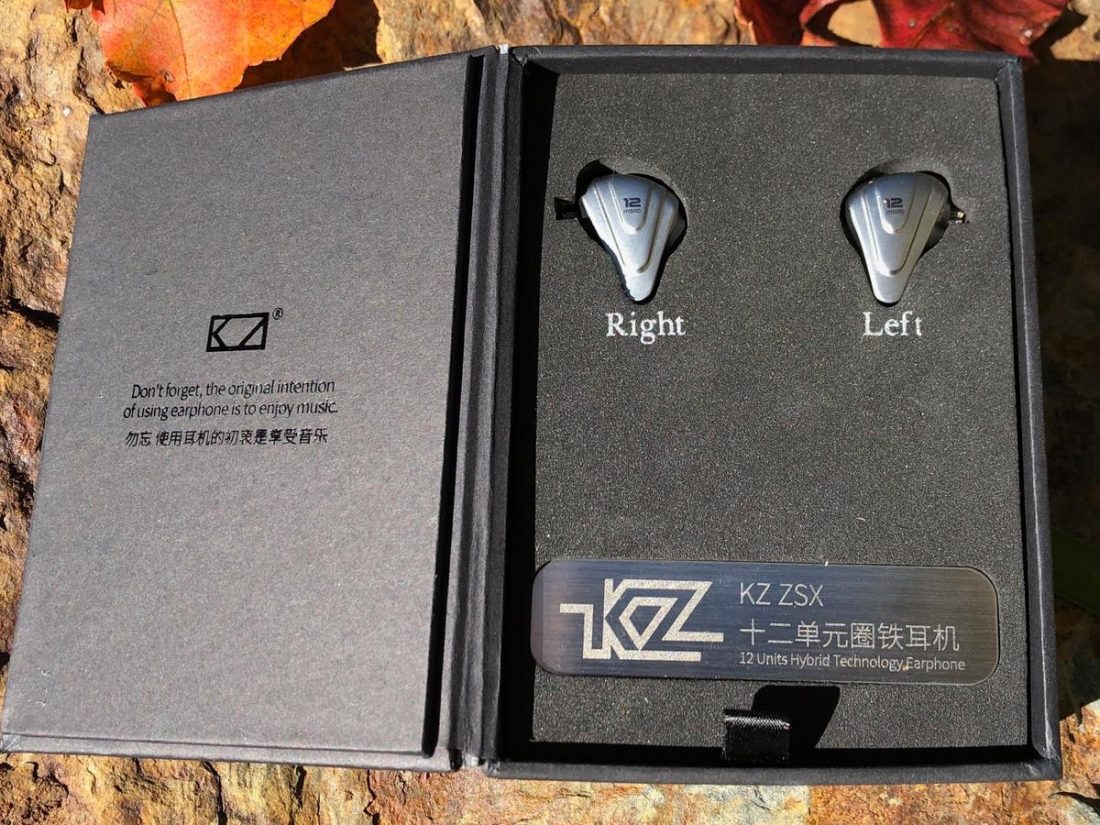
Absolutely nothing new here. You get the smaller book style KZ black box with a foam insert and an engraved metal plate. The IEMs are safely nestled in the black foam, although the right side one is labeled “left” on the foam and vice versa. Pulling out the foam with the small loop on the bottom will net you:
- Cable.
- A bag containing 3 pairs (small, medium and large) of star patterned silicone ear tips. The ear tips on the IEMs themselves appear to be large-sized but are not star-patterned.
- Warranty card. 12 months if sold by KZ official store.
- Instruction card.
- Quality control card (not actually initialed or filled in).
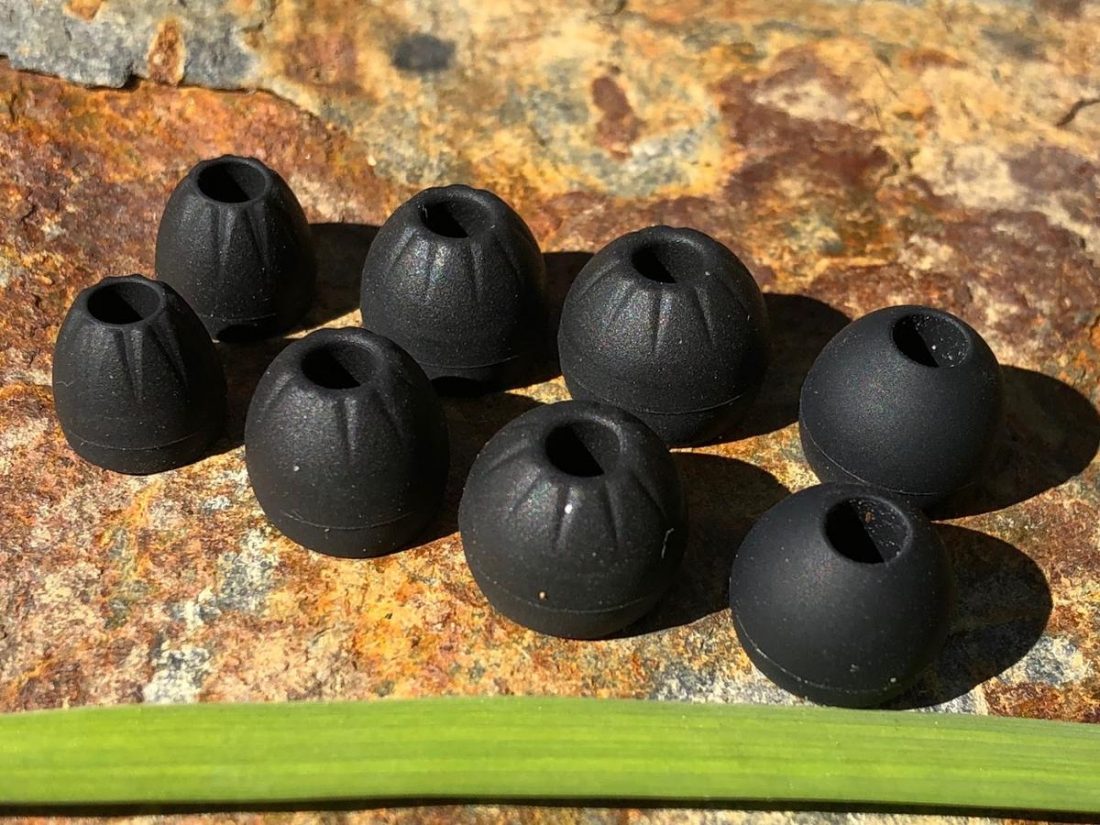
Cable
The cable is the same bronze-colored version included with the newest KZ headphones (AS12, AS16, ZSN, ZSN Pro, ZS10 Pro, and ZST Pro). It features 2-pin 0.75mm (C-style) connectors to fit over the protruding sockets on the IEM body. The cable has a couple of inches of memory-shaping stiff wire to personalize the fit over the ear.
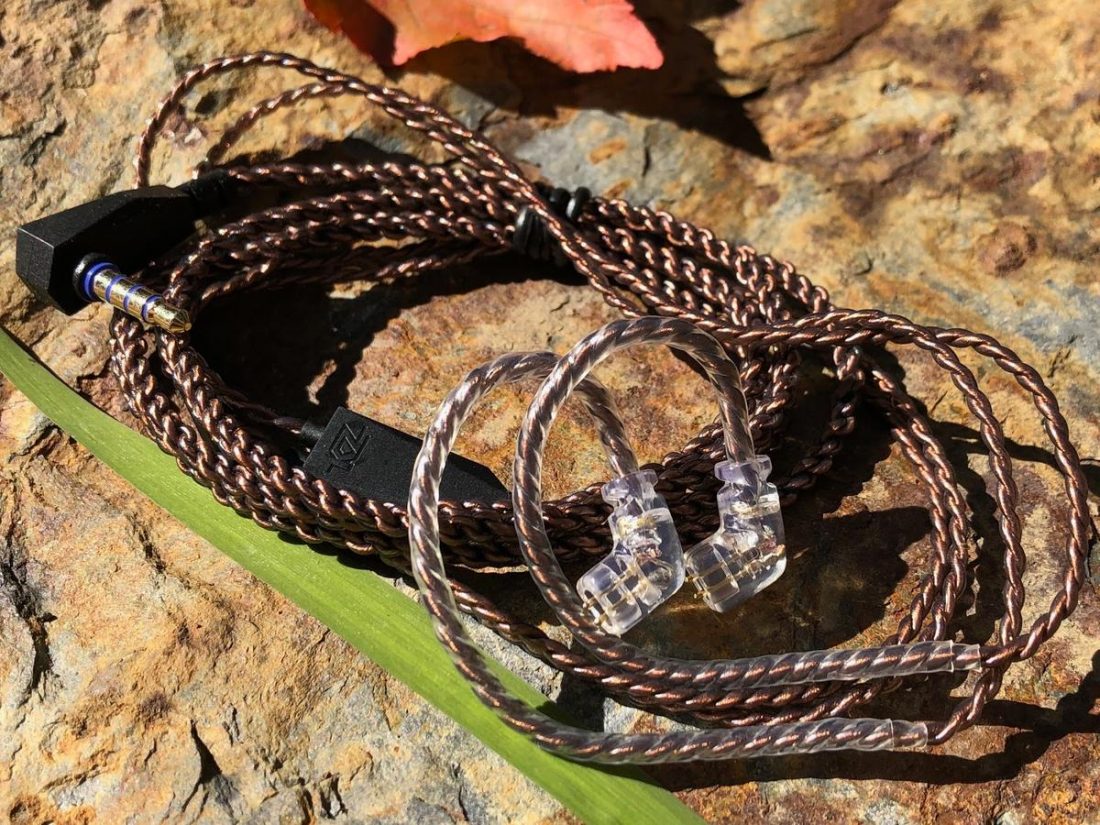
Build Quality
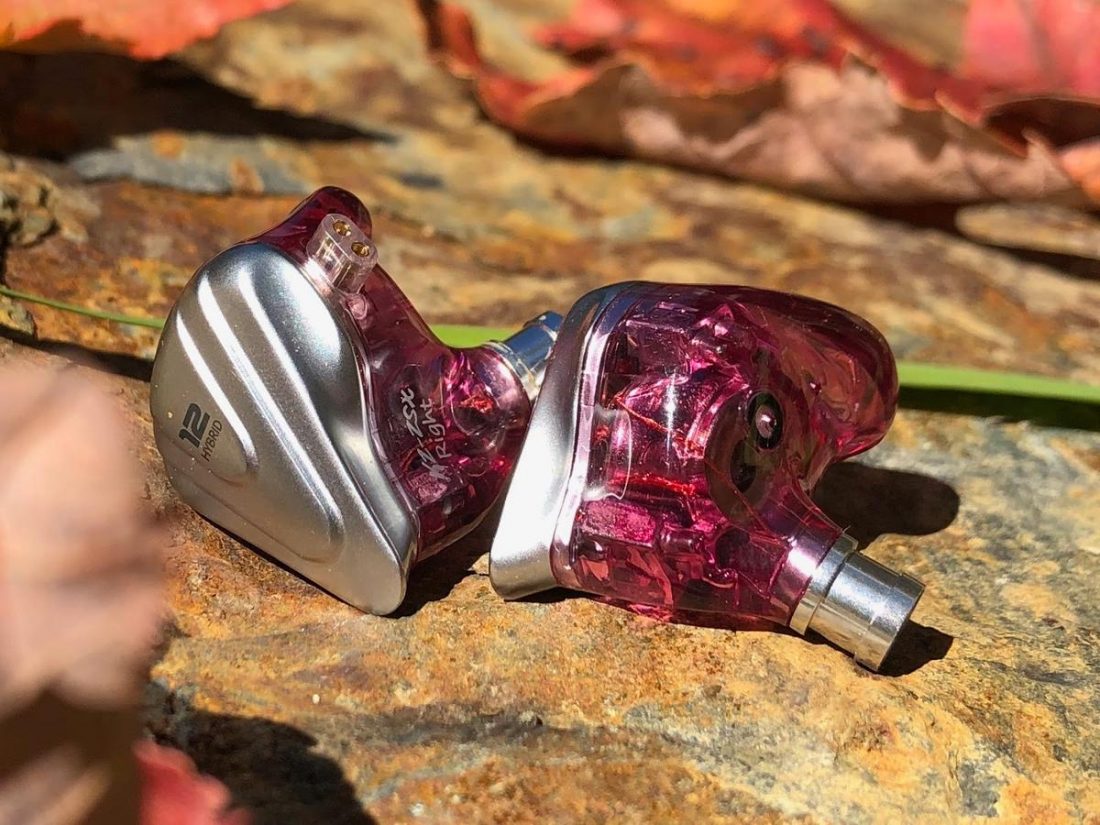
The ZSX features a new zinc alloy faceplate with a concentric wave pattern similar to the AS16, but it protrudes more and is not flush with the body. The faceplate tapers to a narrow point and ends in a fairly sharp edge. Thankfully, this edge is purely decorative, outside the ear, and cannot be felt when wearing.
Unlike the shiny ZS10 Pro, the brushed finish doesn’t show fingerprints. “12 Hybrid” is printed cleanly in the center of the plate. Like other models, the metal faceplate is set firmly into the acrylic body.
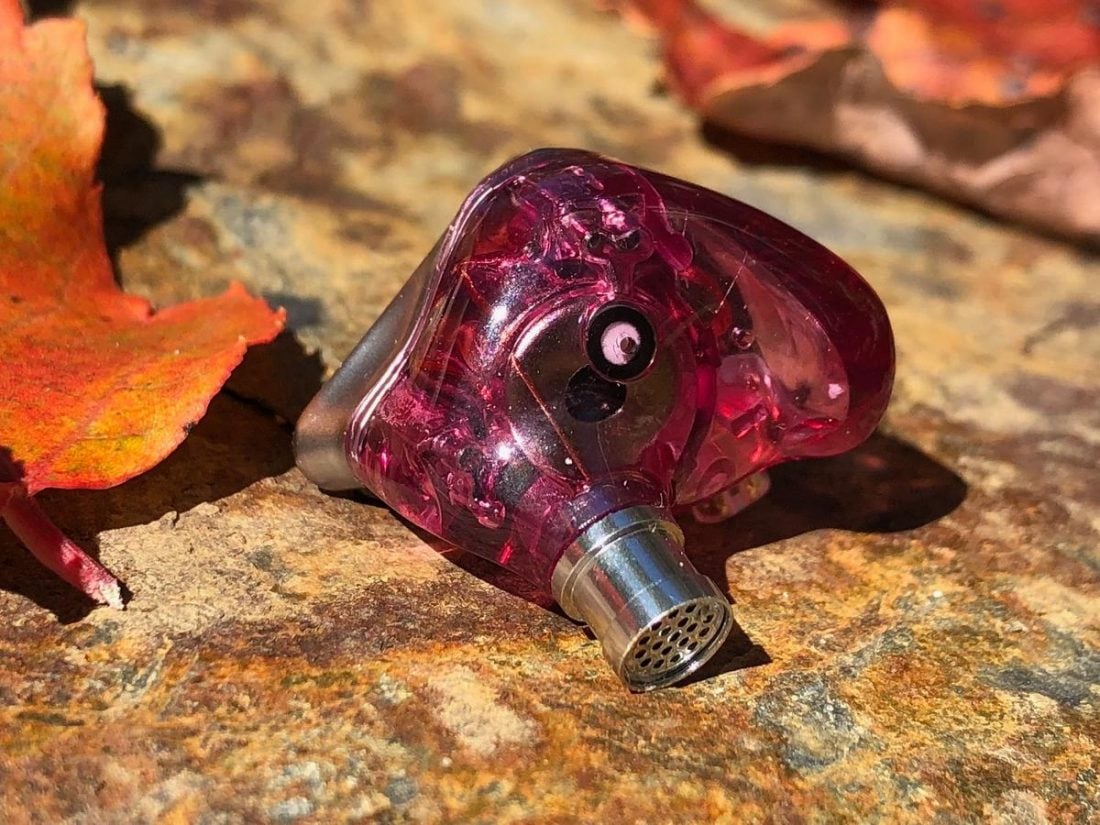
The body is standard KZ translucent resin construction with 2 vent holes on the inner surface. It does sport a brand-new shape that is more intricate than the old half-moon contour of the AS10. It looks almost like a custom IEM and appears shaped specifically to fit the ear with a variety of protrusions and curvatures.
While I found the ZSX very comfortable and it fit my ears well, the shape and size may not work for all ears. The ZSX have a fairly mid-level insertion depth and provide decent isolation.
The nozzle tips are a shiny silver metal construction (unlike the gold color of the ZS10 Pro) but they do share the same small circular-holed silver screen of the ZS10 Pro. “KZ-ZSX” and “Right” or “Left” are printed near the nozzle in a stylized font.
Overall, the design of the ZSX is unique, clean and very well put together.
Driver Configuration
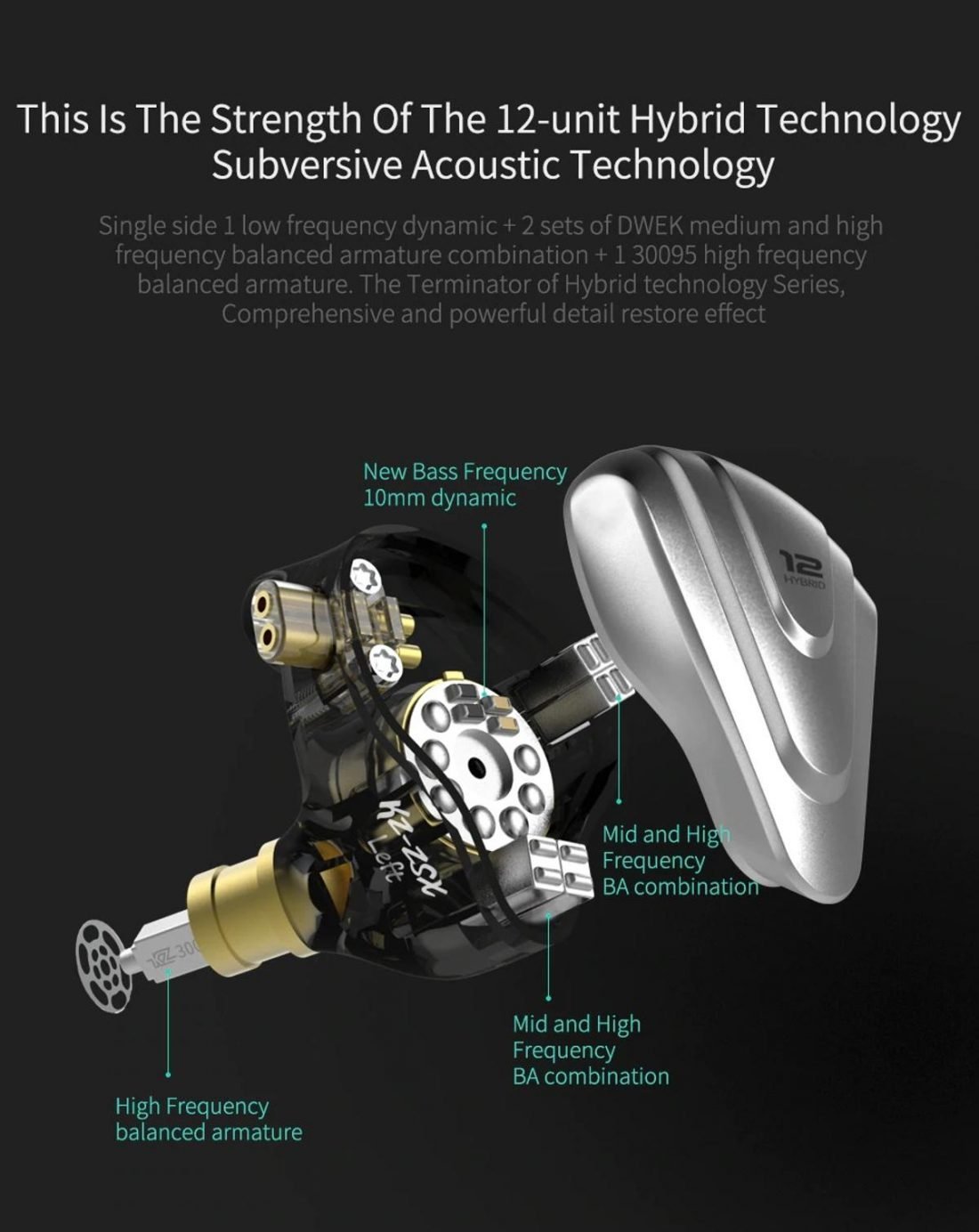
With previous models, KZ has listed the driver models quite prominently in ads and copy. For some (unknown-to-me) reason, this isn’t the case with the KSX. The two double mid and mid-high frequency balanced armature drivers are Bellsing DWEK but the model numbers are not specified.
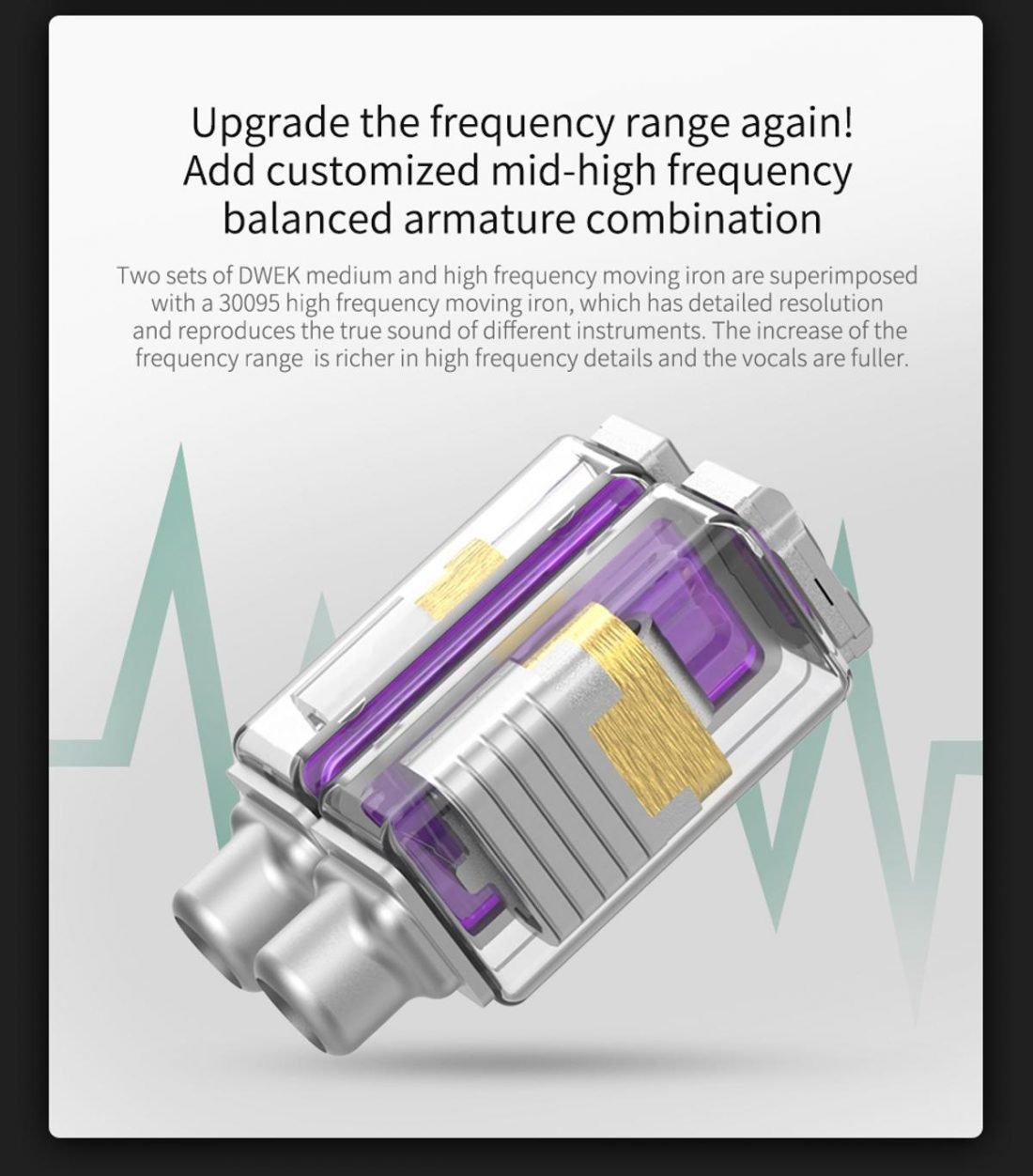
The single 30095 high frequency balanced armature driver looks to be positioned in the nozzle.
KZ has experimented with this sort of arrangement before, with mixed results. In some cases, such as the ZS5 v2, this led to a harsh treble response.
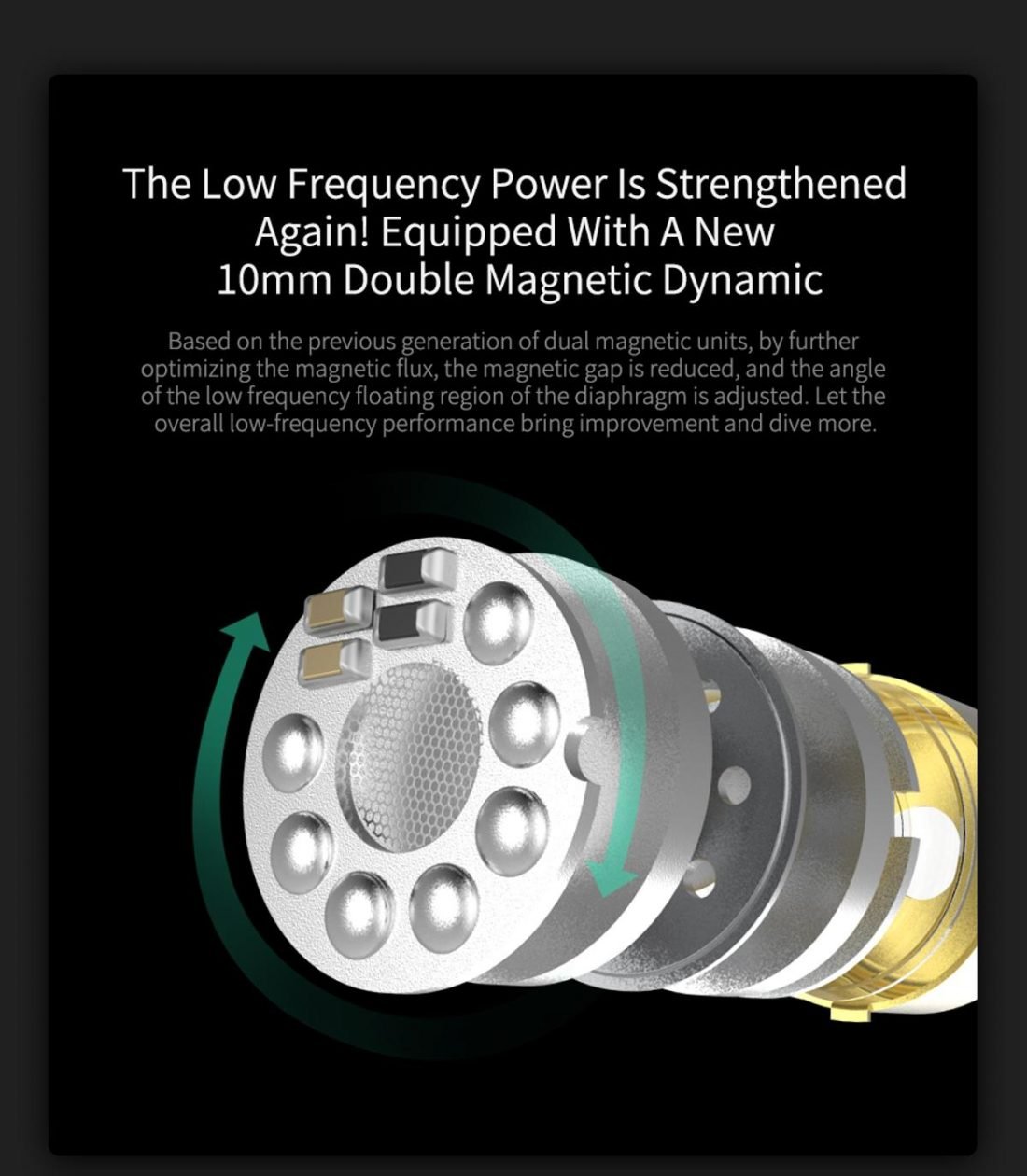
- 10mm dynamic driver: new dual-magnet design
- dual DWEK mid-frequency BAs
- dual DWEK mid-high frequency BAs
- 300095 high-frequency BA
- Electronic crossover
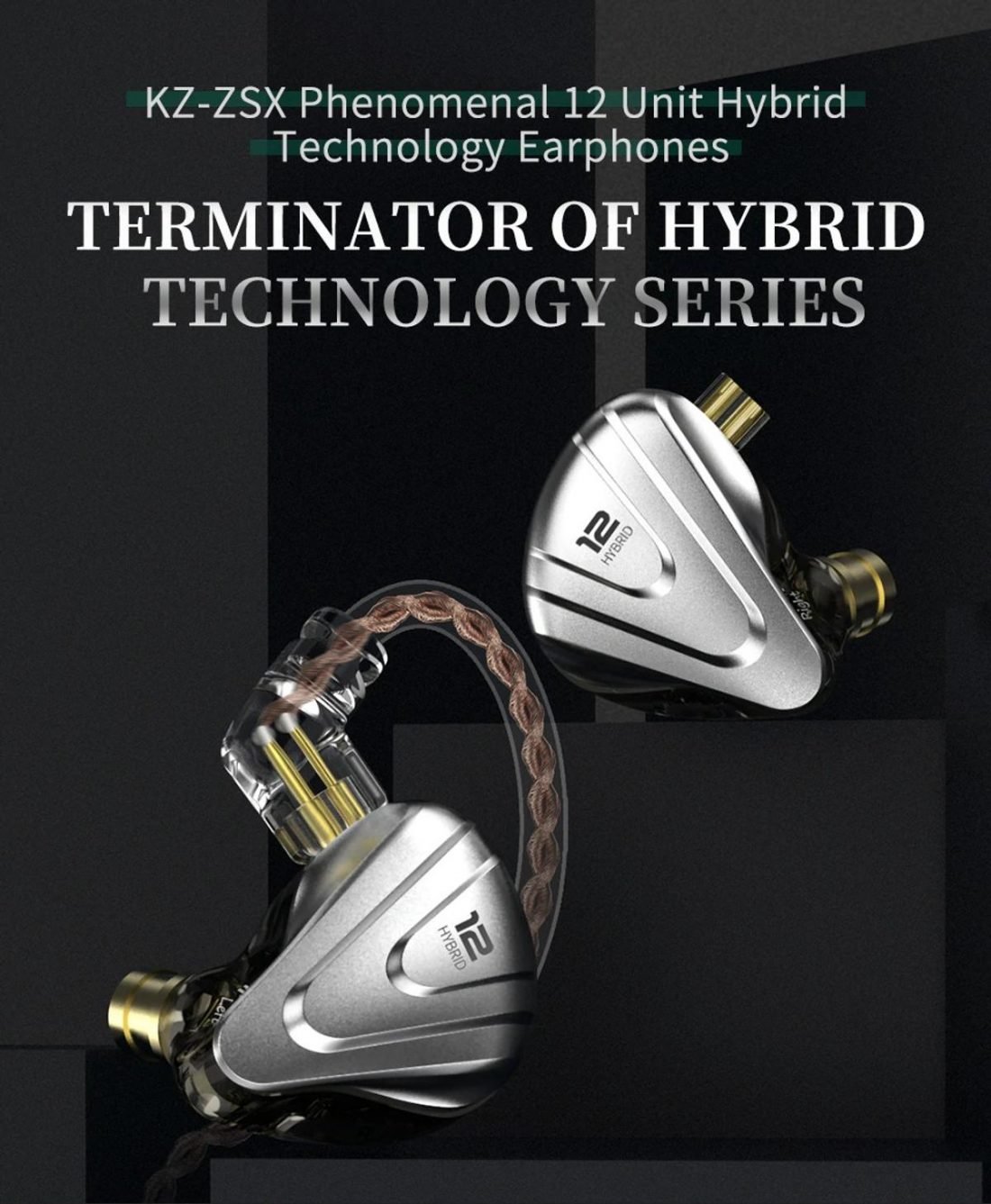
Sound Quality
I listened to the ZSX with a variety of sources including the Hagerman Tuba amplifier, JDS Labs C5D DAC/Amp and directly from my iPhone X dongle. The combination of low-impedance and high-efficiency makes the ZSX perfectly able to be driven from a decent portable source. IEMs are all about portability, so as a result the bulk of my listening was done directly from the iPhone dongle.
This is a very fun sounding IEM. I’m quickly becoming a card-carrying fanboy of hybrid IEMs with the combination of fast and detailed balanced armatures paired with a dynamic driver for deep bass. It wasn’t very long ago that this magical combo could only be found in megabuck models.
This is a terrific time for budget personal Hi-Fi.
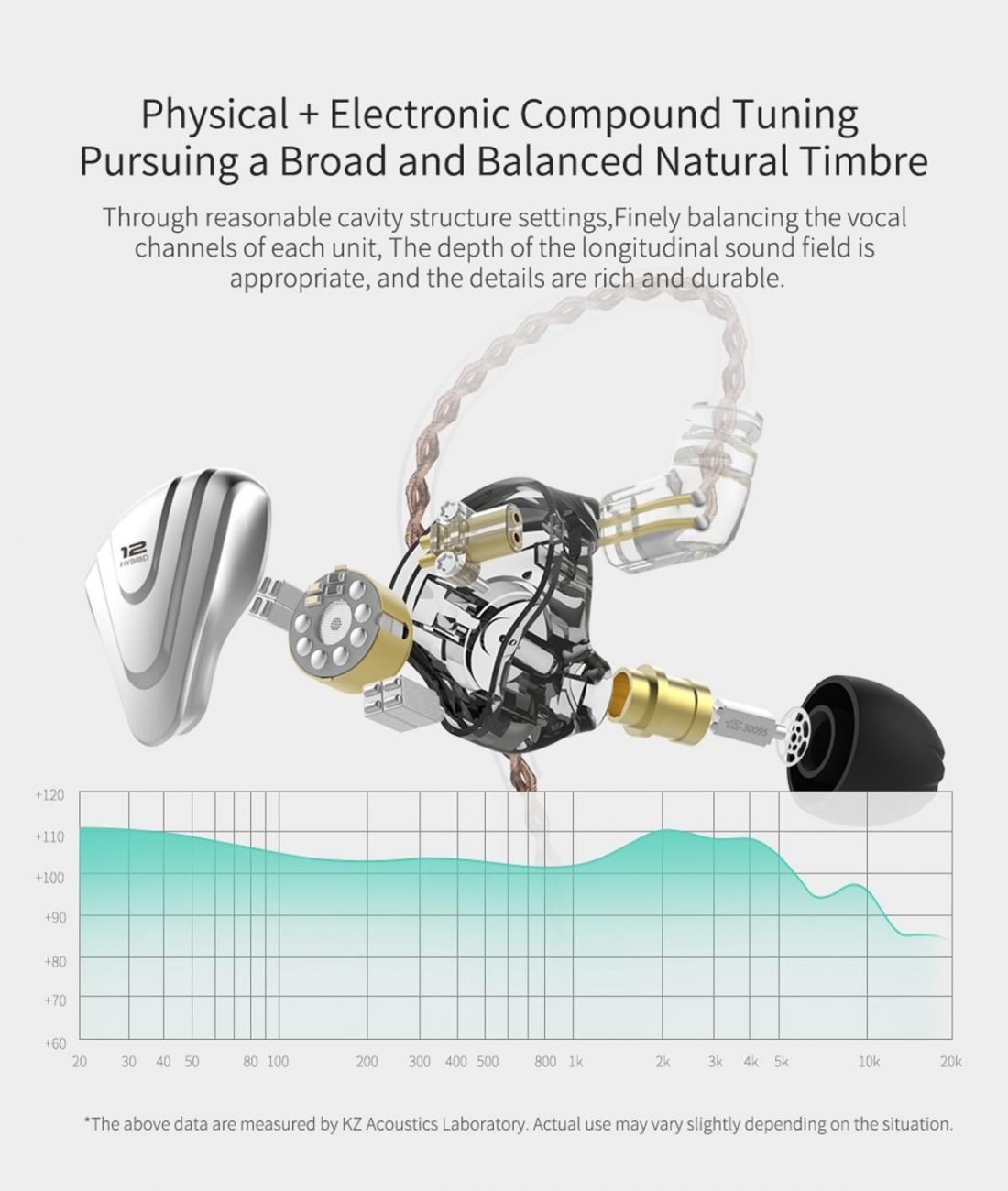
KZ was notorious for an unbalanced v-shaped sound in their early models. This has changed. The last few models have sounded much more balanced and cohesive. The v-shape has been tamed to a fun, but more refined sound signature. I’m happy to report that the ZSX is following this trend and the sound quality far exceeds its modest price point.
Bass
Here’s where things are really fun. The new 10mm driver is punchy and tight. It stays clean, doesn’t overpower the other frequencies and maintains a decent overall balance.
Low bass response is very decent and the mid-bass is forward in the mix and, as a result is very engaging. Rock, EDM or Hip-Hop fans will find a lot to like with the ZSX. It hits hard but with control and finesse.
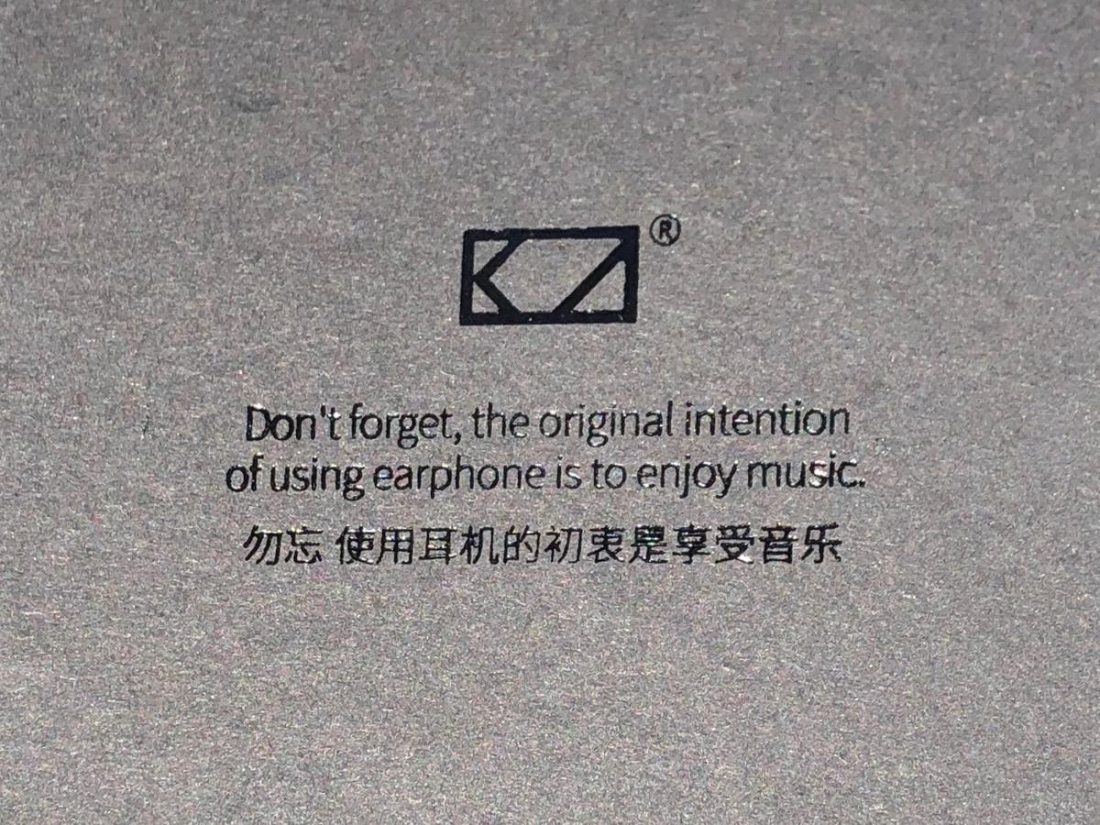
Midrange
The midrange is always the weakest part of the house KZ sound. With the ZSX the midrange is reasonably forward with decent body but just doesn’t deliver to the same extent as the upper and lower frequencies. There is very little treble or bass bleed over, so the midrange, while somewhat recessed in the mix, stays clear and detailed.
Voices come across natural and female vocals seem to shine a bit more than male. Honestly, the midrange is fine, it just doesn’t have quite the ‘wow’ factor as the bass and treble.
Treble
There is an abundance of bright detail available. The ZSX treble is quite extended and somewhat elevated, but the balanced armatures remain clear and reasonably free of sibilance or fatigue.
The treble is a great counterpoint to all that tight bass on the other end. Overall the sound signature remains balanced but nicely extended (both high and low). Music is presented cleanly, clearly and powerfully.
The ZSX is a very energetic sounding IEM; super-engaging and fun.
Compared to the ZS10 Pro
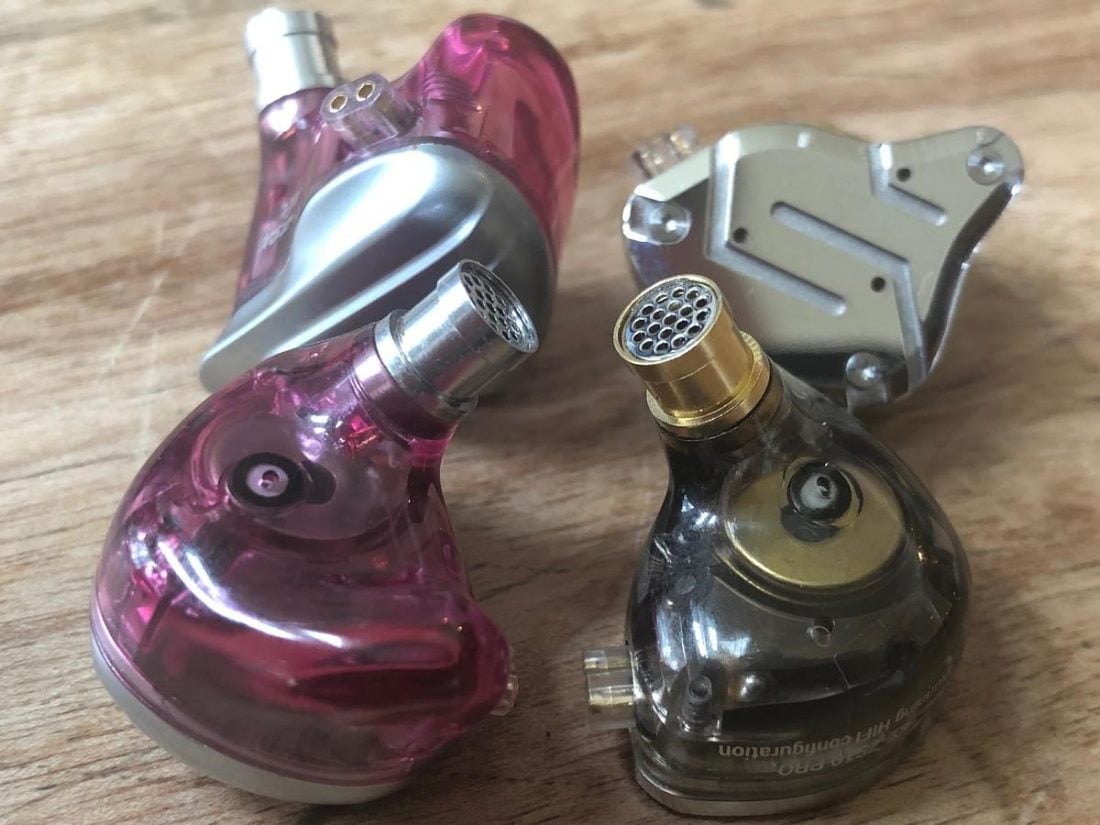
I really like the ZS10 Pro, so the obvious question is the 6-driver (per IEM) ZSX an upgrade over the 5-driver ZS10 Pro?
I prefer the smaller size and overall aesthetics of the ZS10 Pro, but it’s a close thing. Both fit my ears comfortably and look quite good.
Sound quality is also quite similar, but I believe the nod has to go to the new challenger. The ZSX highs are a bit clearer and more detailed. Overall the sound is a tad more forward and engaging. Bass, while perhaps a little less deep than the ZS10 Pro, is better controlled and cleaner on the ZSX.
This isn’t to say that the ZS10 Pro isn’t still a great budget IEM. (It is!) The ZS10 Pro and the ZSX are incredibly similar products, at virtually the same price point, and released by the same manufacturer within a few months. No wonder online forums are full of folks asking which one they should buy.
Conclusion
Practice is indeed making perfect for KZ. They continue to release a flood of new models, and it can feel like each new IEM is a beta test for the next one, but they really do keep getting better. If you listened to earlier models and wrote them off, now is the time to give KZ another chance.
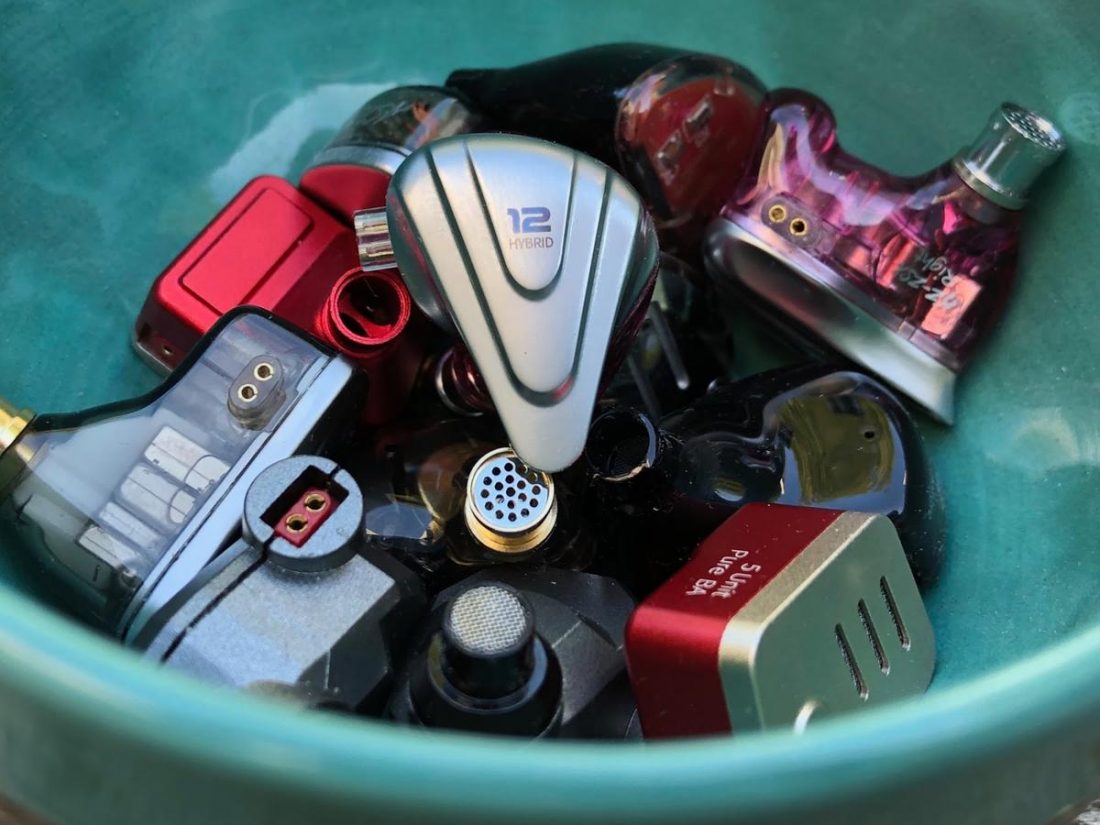
Remember, this is another budget IEM model around $50. KZ recently experimented with a higher price point with the AS16, but at $100+, the standard bundle of accessories, build, and sound quality wasn’t quite as compelling. With the ZS10 Pro and now the ZSX, KZ has made strides to (*ahem*) terminate the competition at this lower (very affordable) price point.
Perhaps KZ is actually run by an evil AI known as Skynet. Perhaps they are using future technology and sending it back in time to change the present. Perhaps they are just making excellent bang-for-the-buck hybrid IEMs.
No matter. If future KZ offerings continue to improve on the ZSX, I say, “all hail our evil computer overlords!”

Can they be purchased directly in store?
Hi. That depends on the store. Any that sell KZ products should carry this model. They are readily available from Amazon (link above) or regular ChiFi web stores.
Hello Trav Wilson good morning.
I really loved your review, for me one of the best so far, always sincerely.
I would like to know if I can use some of your information from this review and join with other reviews to make a total summary in a YouTube video. Obviously I will give you the credits so they can visit your page and get to know your work.
I do it nonprofit, just with the idea of helping my Spanish speaking friends, since there isn’t much information in Spanish regarding audiophilia, I hope you can give me that permission. Thank you very much and keep up the successes.
vs ZST6?
On your professional advice… which is better? TFZ series 2 or KZ ZSX?
I don’t normally read full reviews despite having a genuine interest in audio equipment, greatly furthered by the fact that my health isn’t very good. If I am at home, that’s where I spend 90% of my time, although I am currently in hospital, since January and will be here for quite some time.
Thus my love of music and the quest to listen to it through the best medium possible has been a steep learning curve, and as noted in this article has become a matter subjected to new iem’s from all sides. Confusing – yes. Exhausting trying to determine what would suite me best – absolutely.
YouTube reviews are a constant double edged sword which give direction and miss direction at the same time. Balanced or dynamic, planar or electrostatic, graphene or nanotubes …… its too much and man has never been good with making decisions at the best of times. It would be good if there was a comprehensive comparison chart on the internet to have all of these iems side by side at £50 increments. Furthermore I would like to see more information on the balanced and dynamic drivers, which company uses what, and what are basic to the best available. There is plenty of info on which makes are used in hifi dacs. I think as the iem steam train is roaring towards us, we should be able to have such information available and presented in a way easy to understand, to make an informed decision and not just rely on reviews, for as you say, what works for someone may not work for another.
Now I’ve got that off my chest, I wanted to say thanks for writing a review in a way that anyone can understand and relate too, and not just try and impress with technical prowess – as so many are. Refreshing, informative and shows that you genuinely want to help the
consumer.
As for me I have a short list of about 6 iems and have no idea what I should try despite trying to educate myself. If some are no good I’ll kinda be stuck as not easy to return a product from hospital. And it’s a vicious circle waiting for the next release time and again – you just end up with nothing….
Hi James. Thank you for your message and kind words.
I’m fairly deeply involved in this hobby, and I find the unending new companies, flood of products and incomprehensible naming conventions overwhelming as well.
I will caution you though, if you continue to wait for the one great thing to come along, you’ll miss out on all the great things that are available now.
It’s a fantastic time to get into the IEM hobby. ChiFi has made technology and sound quality available at a price that would have been unimaginable 5-10 years ago.
My advice is to not get too hung up on all the technology and general blah-blah-blah. Hybrids, BA’s, nanotubes, etc are all meaningless when it all just comes down to sound quality. All the technical gobblygook in the world won’t save a bad sounding device.
And here’s the rub… there really are few BAD sounding options out there. I think it’s pretty safe to say that any of the decently reviewed IEMs out there sound good. Likely more than good for the vast majority of folks.
Pick a price point, and try to find the special IEMs that live there. $50 – KZ ZSX or ZS10 Pro are solid choices. $100 – Moondrop Starfields are great. $150 – Shozy Form 1.4 or Thieaudio Voyager 3. And those are just the ones I’m familiar with. Lots more folks have lots more recommendations.
But you know what? I feel confident that you won’t be disappointed with any of them on the list. Bang for the buck? Those Starfields are hard to beat.
I really like your way of writing instead of being too analytical like 90% of reviewers out there, much appreciated for your effort !! 😀
Hey! I appreciate the kind words. With practice I think I’m finding my voice and getting the hang of it. Cheers!
Very nice read. Very good detailed survey.
Have the ZS10Pro already a year now and i am testing others too.
Now i am curious about these “Terminators”.